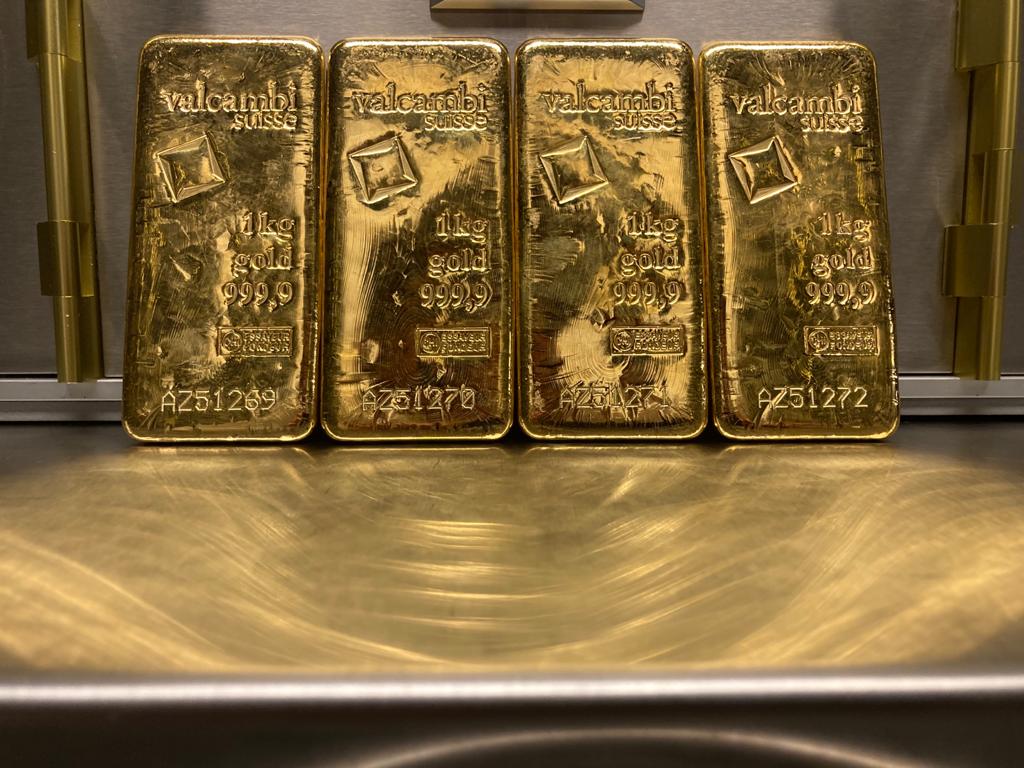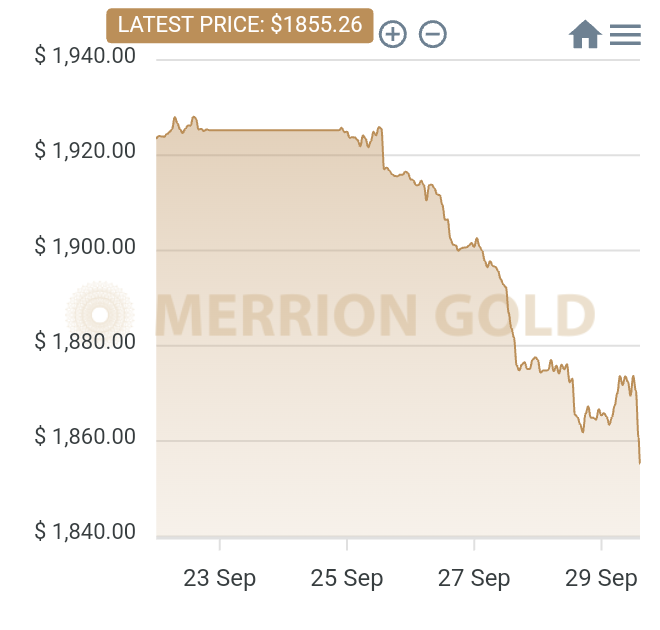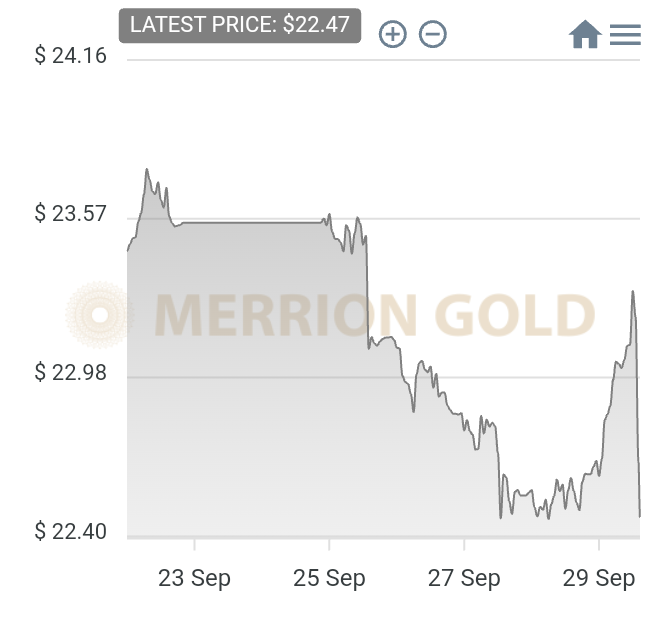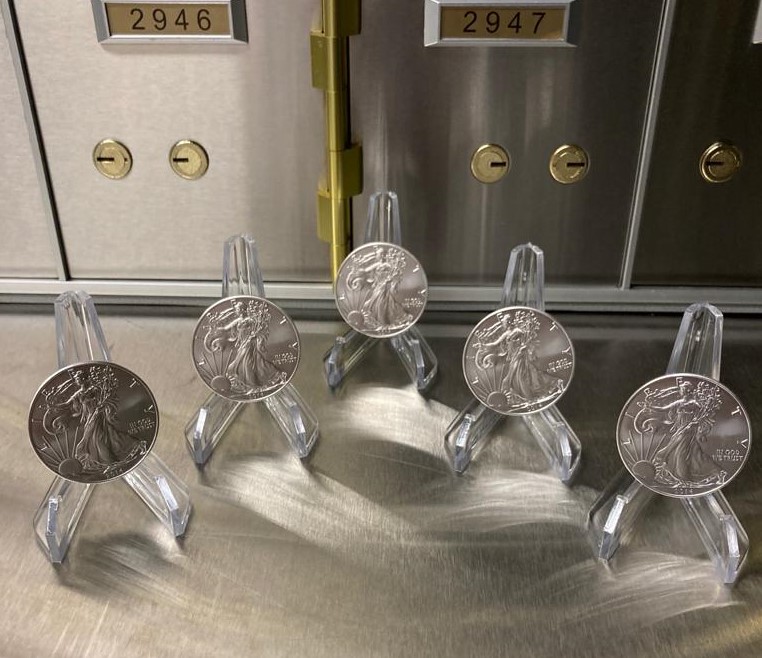
29/09/2023: This Week in Gold w/Market Updates:
Introduction:
Gold opened the week trading at $1,925 and entered into a bearish descent for much of the week. Gold hit a weekly high of $1,926 during the initial stages of the trading day on Monday, before beginning to decline for the remainder of the week. The decline in price can be attributed to a multitude of factors, namely: a) Hawkish FED, b) Anticipation of PCE data, c) U.S. dollar’s rise, and d) Rise in Treasury yields.
Gold began to experience a more rapid decline in price on Tuesday, falling for the second straight session. Gold closed the day trading at $1,902. As DXY (dollar index), and Treasury yields rose, gold retraced further due to the inverse relationship between the aforementioned asset classes.
On Wednesday, gold declined for a third consecutive day. Investor anticipation of PCE data was a prominent factor in pushing the price of gold lower. Investors are expecting the FED to hold rates higher for longer in response to the latest inflation data, which would have an immediate effect on the price of gold. Due to the effect that raising rates has in raising bond yields, investors will effectively exit positions in non-yielding assets in favour of assets that provide a fixed income, such as Treasuries. Gold fell 1.2% from the open to $1,878 to finish the day below the $1,900 level.
As bets for the FED to keep rates higher for longer began to grow, gold extended the losing streak that it was experiencing to close the day at $1,865. Gold had been consistently hitting lower highs and lower lows, with the weekly low of $1,862 being hit on Thursday afternoon. The ascent of Treasury yields to their highest level in 16 years allowed gold to continue the bearish trend that it was on. Thursday also saw the dollar retreat which reduced the effect of the decline that gold was experiencing. The consistent climb of the EXY (Euro Index) throughout the day, pushed Euro-denominated gold lower than what was experienced in the U.S.
At the time of writing, gold is trading at $1,855. PCE data, which is the FED’s preferred inflation measure, was released at 1:30pm and indicated that inflation has cooled. This led to a brief move to the upside for gold before gains quickly reversed before the end of the trading day.
Below is a graph which shows gold’s price action throughout the week:

Silver:
Silver opened the week trading at $23.59. Silver experienced a much more volatile week than gold, and moved consistently lower for much of the week. Silver’s high for the week was the opening price, and price followed a bearish trend from there. From the open, price fell 2%, to close the day at $23.12.
Similarly to gold, silver was affected by the factors that were mentioned previously, those being: FED expectations, a higher U.S. dollar, and a rise in Treasury yields. Silver hit a weekly low of $22.46 on Wednesday before consolidating within a narrow range for much of the trading day on Thursday.
On Friday, silver began to reverse the trend that it was following and climb higher. Price rose as much as 2.9% to hit $23.30 before quickly reversing and plummeting 3.56% to $22.47 at the time of writing.
Below is a graph which shows silver’s price action throughout the week:

Market Updates:
PCE Data:
The main economic news during the week was the release of the latest PCE data. PCE (Personal Consumption Expenditure) is the FED’s preferred inflation measurement. For the month of August, PCE came in higher than the previous month year-on-year. Data showed that inflation accelerated to 3.5% compared to the previous months 3.4%. For month-on-month, data came in at 0.4%, up from the previous month’s 0.2%. Core PCE, which removes some of the more volatile factors, cooled both year-on-year and month-on-month, coming in at 3.9% and 0.1%, respectively.
This data showed, at least when it comes to core PCE data, that inflation is cooling. This is an indication that the FED’s monetary policy and subsequent raising of interest rates is beginning to slow down the economy and slow rising prices.
Gold reacted well to the latest PCE data, as a direct impact of cooling inflation meant that investors were less focused on the FED keeping rates higher for longer. This moved the odds in the favour of an eventual reduction in interest rates. Cooling inflation moved the dollar lower, as well as leading to a fall in Treasury yields. Both of those asset classes falling in value had a brief effect on gold to the upside.
Contact us if you would like to receive quotations on the gold and silver products that Merrion Gold has to offer. You can call us at 01 254 7901 or email us at info@merriongold.ie.

